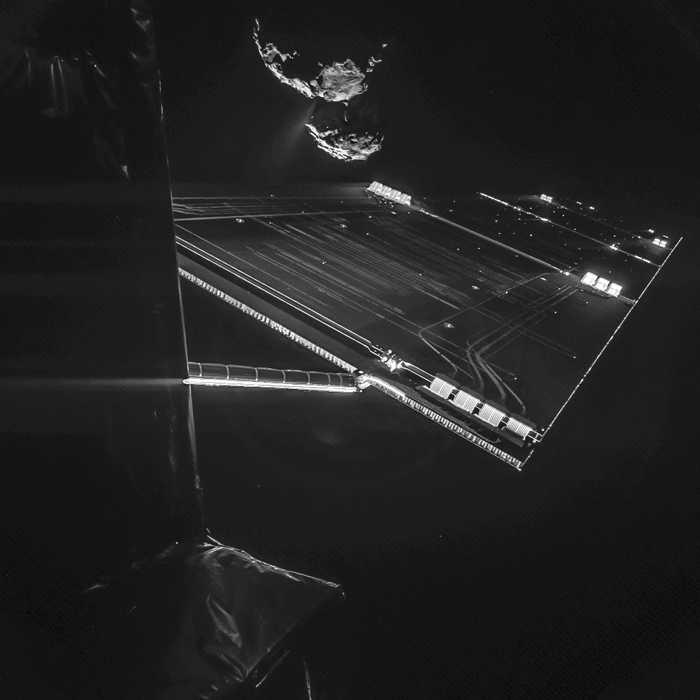First Touchdown on Comet
November 12, 2014
The European Space Agency (ESA) made space flight history today by deploying a landing craft to the surface of a comet. The Philae lander took only minutes after separating from its mother ship, the Rosetta spacecraft, to reach the nucleus (solid core) of Comet Churyumov-Gerasimenko. To prevent the lander from simply bouncing off the low-gravity comet into space, Philae immediately fired two harpoons into the surface. A small thruster also ignited to keep the lander grounded. However, scientists think the anchors that hold it to the surface failed to work properly, and they are investigating.
Rosetta, which was launched by the ESA in March 2004, traveled 3.7 billion miles (6 billion kilometers) through the solar system to meet up with comet 67P/Churyumov-Gerasimenko (nicknamed Chury). The probe used a series of fly-bys past Earth and Mars to increase its speed during the chase—Chury travels at a speed of around 34,000 miles (55,000 kilometers) per hour. During the lengthy journey, the probe was put into “hibernation” for for some 2.5 years to save energy.

The Rosetta spacecraft appears in a selfie with Comet 67P/Churyumov–Gerasimenko in October 2014, made using a camera on the Philae lander. At that point, Rosetta was about 10 miles (16 kilometers) from the surface of the comet. (ESA)
Scientists at the ESA’s flight center in Darmstadt, Germany, woke Rosetta in January 2014 for the last leg of its journey. In August, ESA scientists fired thrusters to maneuvered it into orbit around the comet. In August, Rosetta became the first spacecraft to rendezvous with a comet. (Other missions have rendezvoused with asteroids and meteors.) Once in orbit, Rosetta began to photograph and map the comet’s surface, mainly to choose a landing site for Philae. Rosetta will continue to study the comet as it orbits the sun.
Philae carries 10 instruments for studying Chury, including a drill to taking samples from below the surface. Scientists are particularly interested in learning about the chemical makeup of the comet and its structure. Comets are leftover debris from the formation of the solar system about 4.6 billion years ago. As such, their primitive material holds valuable clues about the formation of the planets and moons. The solar-powered lander Philae was expected to continue its investigations for at least a week.
More than 10 space missions have been launched to study comets. NASA’s Deep Impact spacecraft intentionally crashed an impactor into Comet Tempel 1 in 2005. In the mid-2000′s, the Stardust space probe collected and returned to Earth particles it captured by flying close to Comet Wild. However, until Rosetta, no mission had touched down on a comet.
Additional World Book articles:
For additional information about the Rosetta missions, see: http://rosetta.esa.int/


